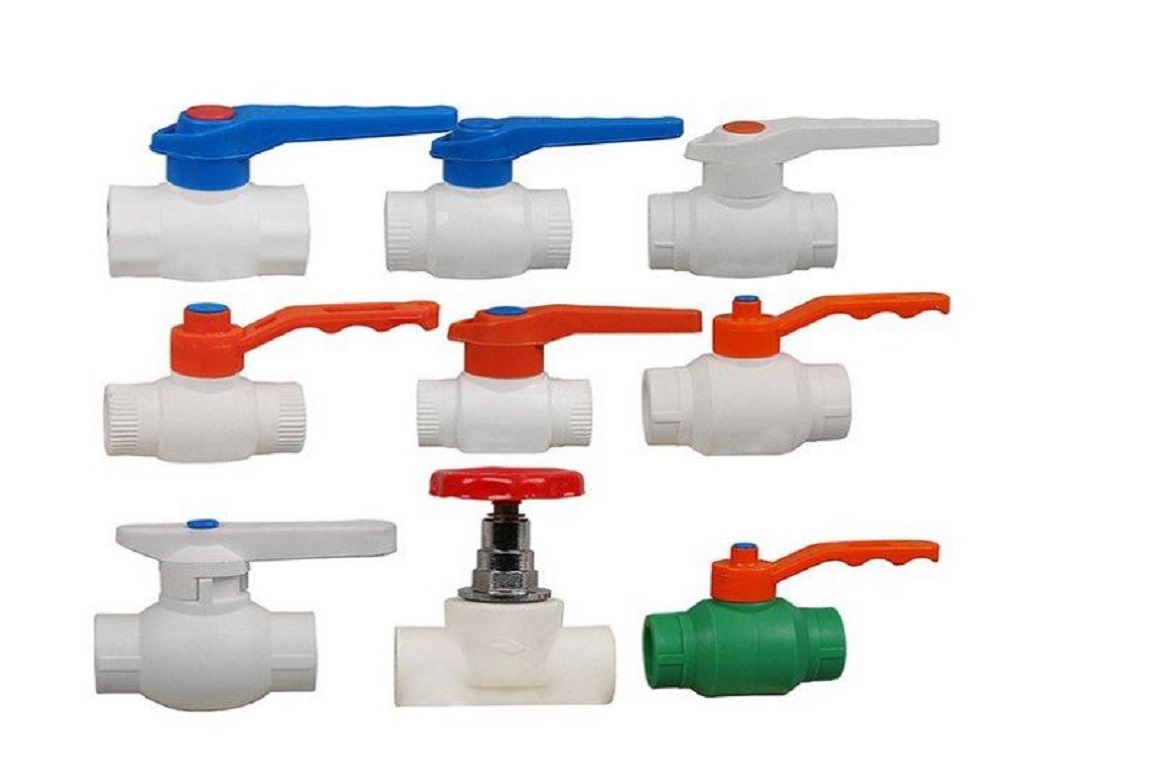Plastic and Polymeric Valves: An Overview
Plastic and polymeric valves, often referred to as “plastic valves,” are crucial components in various industries due to their resistance to corrosion, lightweight properties, and affordability. These valves are made from a range of materials, including thermoplastics such as PVC (Polyvinyl Chloride), CPVC (Chlorinated Polyvinyl Chloride), PP (Polypropylene), and PVDF (Polyvinylidene Fluoride), as well as elastomers and composites. Unlike metal valves, plastic valves offer advantages in environments where chemical resistance is key, and they can be found in applications ranging from water treatment to chemical processing and food manufacturing.
Types of Plastics Used in Valves
1. PVC (Polyvinyl Chloride):
PVC is one of the most commonly used materials for plastic valves, particularly in low-pressure and non-critical applications. It is favored for its affordability and ability to resist chemical corrosion, particularly against acids, alkalis, and salts. PVC valves are widely used in irrigation systems, water distribution, and wastewater management.
2. CPVC (Chlorinated Polyvinyl Chloride):
CPVC is a more chemically resistant variant of PVC. With an enhanced ability to withstand higher temperatures (up to 200°F or 93°C), it is often chosen for hot water applications or chemical processes that require greater durability. CPVC valves are particularly common in industrial settings, including chemical processing plants and HVAC systems.
3. PP (Polypropylene):
Polypropylene valves offer excellent resistance to a wide range of chemicals and are often used in applications that involve aggressive chemicals such as acids and solvents. PP is also resistant to cracking and stress, making it ideal for applications where mechanical stress or vibrations might be present.
4. PVDF (Polyvinylidene Fluoride):
PVDF is a high-performance thermoplastic known for its superior chemical resistance and purity. It is often chosen for handling highly corrosive chemicals and for use in ultrapure water systems or semiconductor manufacturing, where material contamination needs to be minimized.
Advantages of Plastic Valves
1. Corrosion Resistance:
Plastic valves are inherently resistant to corrosion and rust, making them ideal for environments where metal valves would degrade quickly due to exposure to chemicals or water. This characteristic is particularly valuable in industries such as wastewater treatment, where exposure to harsh chemicals is common.
2. Lightweight:
Compared to metal valves, plastic valves are much lighter, which simplifies installation and reduces the overall weight of piping systems. This can lower transportation costs and make the installation process quicker and easier, particularly in large-scale projects.
3. Affordability:
Plastic valves are generally less expensive to produce than their metal counterparts. This cost-effectiveness is particularly beneficial in systems where frequent valve replacement might be required due to wear and tear.
4. Chemical Inertness:
The chemical inertness of plastic materials makes them ideal for use in food and pharmaceutical applications where contamination must be avoided. Plastics like PVDF are used in highly sensitive environments to prevent chemical reactions or leaching of contaminants.
5. Electrical Insulation:
Plastics provide excellent electrical insulation, making plastic valves a safer option in certain environments where electrical conductivity might pose a risk, such as in the chemical and electronic industries.
Disadvantages of Plastic Valves
1. Temperature Limitations:
One of the primary drawbacks of plastic valves is their relatively low resistance to high temperatures. Most plastics have a lower melting point than metals, which limits their use in high-temperature applications. Materials like CPVC and PVDF offer improved temperature resistance but still fall short of what metal valves can handle.
2. Mechanical Strength:
Although plastic valves are resistant to corrosion and lightweight, they generally have lower mechanical strength compared to metal valves. This makes them less suitable for high-pressure applications or situations where the valve may be subjected to significant mechanical forces.
3. UV Degradation:
Some plastics are susceptible to degradation when exposed to ultraviolet (UV) light. This means that plastic valves may become brittle or lose their structural integrity if used in outdoor applications without proper UV protection.
#### Applications of Plastic Valves
1. Water Treatment and Distribution:
Plastic valves are widely used in water treatment plants due to their corrosion resistance and low cost. They are used in applications such as filtration systems, chlorination processes, and sewage treatment. The chemical resistance of plastic materials makes them ideal for handling chlorine and other disinfectants.
2. Chemical Processing:
In the chemical industry, plastic valves are used to transport corrosive chemicals safely. The ability of plastics to resist a wide range of acids, bases, and solvents makes them indispensable in this field.
3. Pharmaceutical and Food Industries:
The non-reactive nature of many plastics makes them suitable for use in the pharmaceutical and food industries, where contamination must be avoided. Plastic valves are used to control the flow of liquids in sanitary processing systems.
4. Irrigation and Agriculture:
In agricultural applications, plastic valves are used to control water flow in irrigation systems. Their lightweight and resistance to rust make them an ideal choice for outdoor and underground use, where metal valves would corrode over time.
5. Marine Applications:
Plastics’ resistance to saltwater corrosion makes them suitable for marine environments, where they are often used in seawater cooling systems, bilge pumps, and desalination plants.
Conclusion
Plastic and polymeric valves have revolutionized various industries by offering solutions where metal valves would fail due to corrosion or chemical interaction. While they may not match the mechanical strength or temperature resilience of metal valves, their lightweight, corrosion resistance, and chemical inertness make them an essential component in water treatment, chemical processing, and other critical sectors. As technology advances, the development of more durable and temperature-resistant plastic materials will continue to expand the range of applications for these versatile valves.


